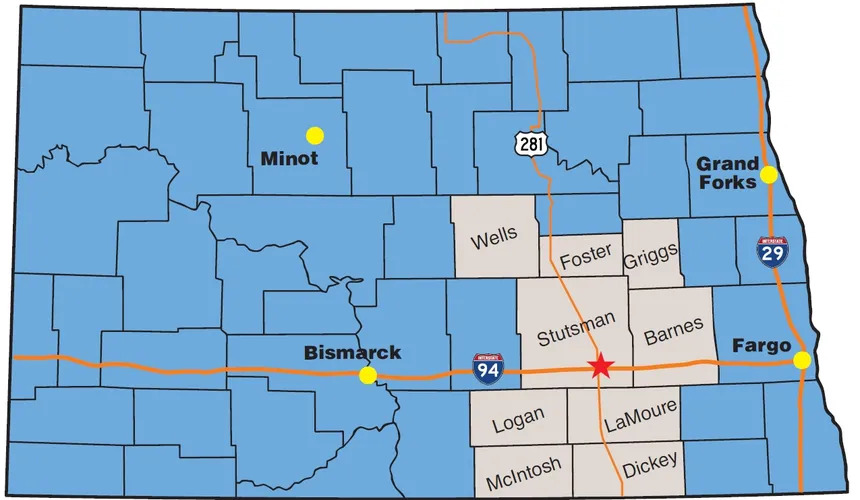
JAMESTOWN, N.D. (NewsDakota.com) – A housing study that began in the Fall of 2021 has been completed and released according to the South Central Dakota Regional Council (SCDRC).
The Region VI Housing Study was conducted for the nine counties the council serves: Barnes, Dickey, Foster, Griggs, LaMoure, Logan, McIntosh, Stutsman and Wells. The study was conducted by Maxfield Research, Inc. of Minnesota.
“The previous Region VI housing study was completed in 2013,” Executive Director Traci Redlin stated in the release. “As was the case then, the Council’s new housing study confirms that demographics and the region’s economy are the key drivers in the region’s population growth and the accompanying increase in housing needs. The study shows the need across the nine counties for new construction on the rental side.”
The study shows there is a demand for 484 market rate units, 278 affordable units and 201 subsidized rental units. Most of the rentals (80%) within the Region VI are market-rate rentals, meaning there are no restrictions in rental prices from an income standpoint. The average monthly rent by unit type across the nine counties is about $500 for a studio, $710 for a one bedroom, $855 for a two bedroom and $1200 for a three bedroom. There has been a 7% increase in average annual rental cost in the past ten-year span, showing monthly rent increasing from $506 to $868 in the region.
“Household income must absorb this increase, however it has been relatively steady across the nine counties, and remains 12% lower than the state average,” Redlin added.
The housing study showed the three oldest population cohorts for 2022 in the nine counties were those aged 55-64 (15% of the total population), those aged 65-74 (13% of the total population), and those aged 75 and older with 12.5% of the population. In North Dakota, the three largest population cohorts for 2022 were ages 25-34 with 14.4% of the population, 55-64 with 13% of the population, and those aged 35-44 comprising 12 % of the population. As the region’s population ages over the next five years, baby boomers will drive much of this growth.
Baby boomers who sell their single-family homes may want to rent, which allows these houses to enter the housing market and providing housing options for younger buyers.
Apartment demand is coming from the region’s older demographic cohorts who would rather live in an apartment and not senior housing, thus causing a lack in rentals. Overall, the nine counties have a 1.9% vacancy rate for 12-plus rental units, 1.6% vacancy rate in market-rate rentals and a 2.4% vacancy rate for affordable or subsidized rentals. Housing experts suggest the vacancy rate should be about 5%, with an optimal rate of 7%. Market-rate rentals are units that have no restrictions in rental prices from an income standpoint.
Of the overall cohort aged 65 and older in the region, the highest home ownership rates were found in Stutsman and Barnes counties, where 58% of the population lives. Overall across Region VI, evidence from this analysis suggests this cohort is not selling its homes, rather it is downsizing or rightsizing.
The nearly 2,500 senior housing units needed in the region include 600 market-rate rentals and 572 affordable rentals. This analysis suggests there are areas in the region that do not possess many options for seniors, therefore there is demand across much of Region VI for more senior housing units.
“In summary, this study confirms that today’s housing demand within Region VI is driven by millennials, baby boomers and senior citizens seeking alternative housing,” Redlin concluded. “It has been a long journey to get it [the study] completed but we are very excited to have the opportunity to bring this to our region.”
